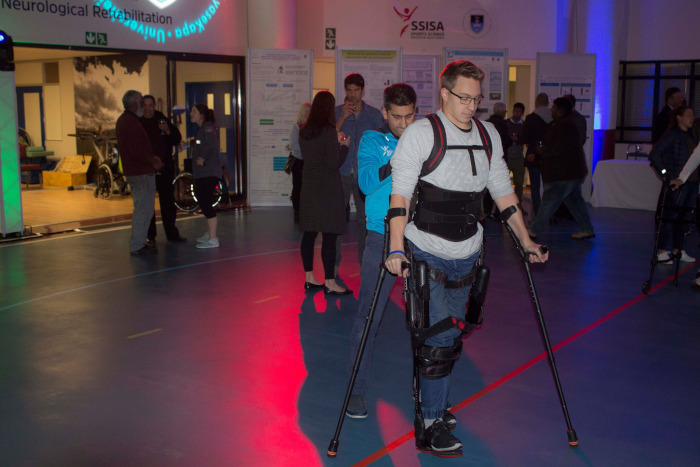The University of Cape Town (UCT) Sports Science institute is using ground-breaking robotic technology called the Esko suit to study the rehabilitation of spinal cord injuries and stroke patients.
The robotic exoskeleton helps patients walk again by creating a support structure to facilitate movement and increase their muscle strength. The suit is manufactured in Richmond, California, by Esko Bionics and is used in over 200 rehabilitation centres around the world.
Esko Bionics aims to change the way humans live and work with their inventive tech materials and systems.
The suit is paired with ‘EXO GT’, a medical device that teaches spinal cord and stroke patients to walk again by strengthening their muscles.
The device collects data while in use and is analysed to help therapists improve therapy sessions for their patients.
UCT PHD candidate, Robert Evans, who is specialising in exercise science and sports medicine is using the suit to understand the rehabilitation of these injuries.
A non-profit organisation, Walking with Brandon, brought in the R1.4-million suit to help with the study.
The suits functions with use of sensor pads at the feet of the machine and send signals to the motors of the upper parts of the suit to provide movement. It also adjusts to the user, depending on the dominant right leg, the machine will adjust the level of support.
As the patients muscle strength increases the suit adjusts its support accordingly.
Evans is closely working with Odwa Magenuka, a local quadriplegic patient who has seen a positive improvement in his movement abilities.
Magenuka was hospitalised for over a year after being diagnosed with paralysis from the waist down.
“The benefits of the suit are users are being able to regain full muscle strength which doesn’t always happen but is a possibility,” Evans said.
Magenuka is hopeful of the possibilities of the suit, “Its a great feeling that I can move and shift again.”
Evans has focused his research on the suit’s impact displayed during the rehabilitation of patients – from the health-related benefits to the mental affects the device has on patients who suffer from spinal cord injuries.
Evans research is inspired from the story of Brandon Beck who was left paralysed after a gymnastic incident in 2012.
The suit has given hope to Beck, who is determined to walk again. Beck told Business Insider, ““I remember my first-time walking (in the Ekso Suit), my stomach felt as if it was on fire. I was using muscles that had not been stimulated for three years.”
Rehabilitation success
The UCT project has collected data from 16 patients over six months to monitor the impact of the Ekso suit, as compared to alternative rehabilitation methods.
The aim of the study is to gauge the success rate and changes in those using the Ekso suit and those who aren’t.
Evans is positive about the success, “I can tell you so far that we have seen large improvements in both groups. We’re looking deep into the data, monitoring their changes in multiple domains such as muscle activation, blood circulation, bone density and psychological outlook, for example.”
A conference will be held in August to release the preliminary results from the project.
Picture: UCT Sports Science institute






